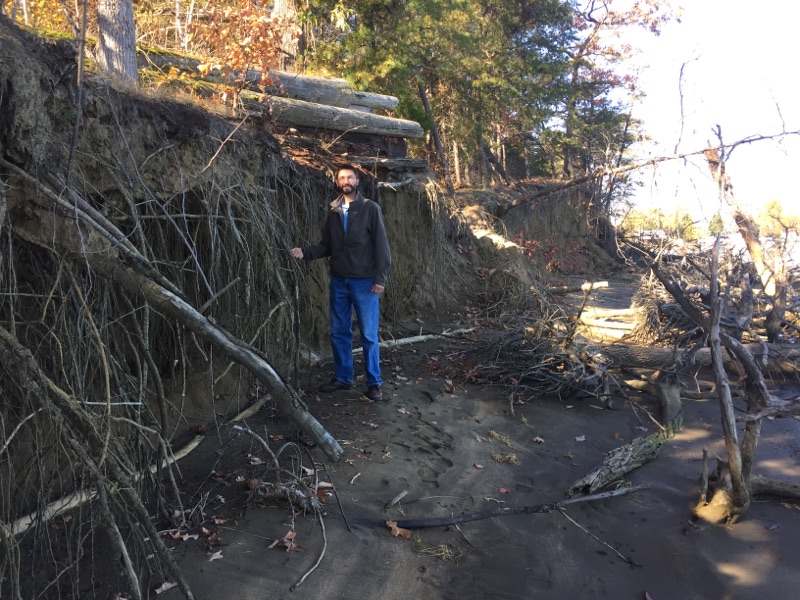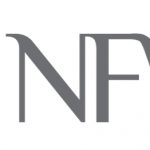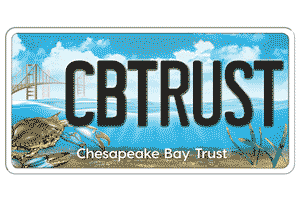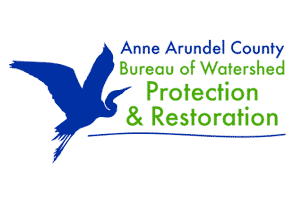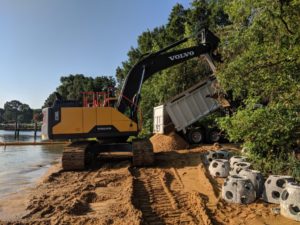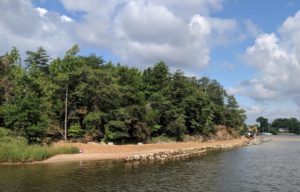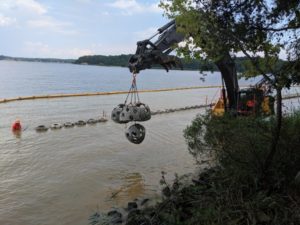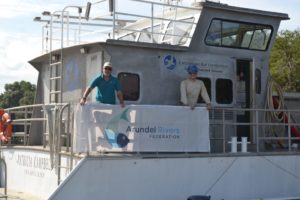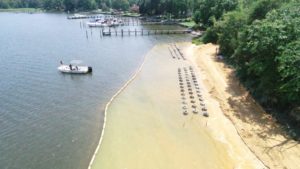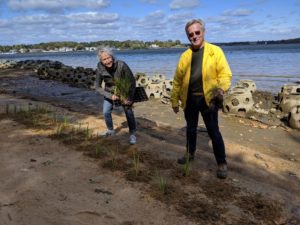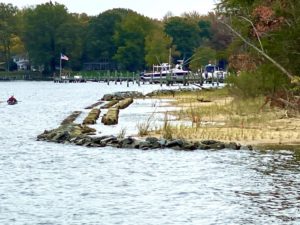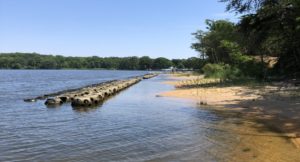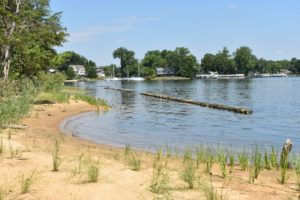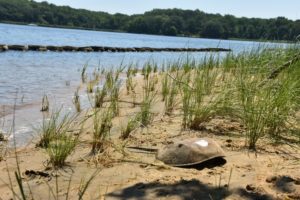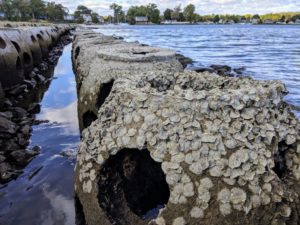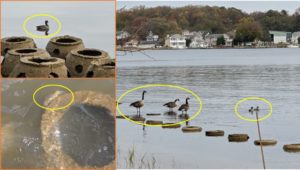Living Shorelines Restoration
Turnbull Estates Living Shoreline
Arundel Rivers in partnership with the Chesapeake Bay Foundation and Coastal Conservation Association, completed an innovative living shoreline restoration approach, utilizing the native oyster Crassostrea virginica along with conventional methods (segmented sills). Project goals were to prevent further erosion of the native beach and marsh, and to allow accretion to create additional habitat with a structural shellfish component. This project reduces the sediment flowing into Glebe Creek, the home of the South River’s only designated oyster sanctuary, in order to improve water quality for the reef. Upon project completion, thousands of native plants and marsh grasses were planted and and woody debris placed to create multiple layers of habitat.
Instead of proposing a conventional living shoreline, the Federation worked with the Chesapeake Bay Foundation (CBF) and Coastal Conservation Association (CCA) on an innovative approach to stabilizing this shoreline that utilizes both traditional rip rap and oyster reef balls. Oyster reef balls are more likely to become shellfish habitat than the types of rip rap used in conventional living shorelines due to its larger surface area to volume ratio to promote the growth of oysters and other bivalves.
Traditional rock sills were placed at the most vulnerable location of the shoreline. Four additional sills made entirely of reefballs were installed between the traditional rock sills. Towards the end of the shoreline with the lowest rate of erosion, reefballs were placed in rows to protect the shoreline to allow marsh to establish. While some of the reefballs are serving as protection against erosion, the reefballs placed on the outer edge of the reefball sills were set with oyster spat. This means that oyster babies were intentionally placed on the reefballs. The hope is that the reefballs in these areas will not only sustain an oyster population but that when they spawn, oysters will spread to the other reef balls and to the oyster reef located nearby. This portion of the project would not have been possible without our good friends and partners at the Chesapeake Bay Foundation and the Coastal Conservation Association.
The project was designed and constructed by Resource Restoration Group. The project was funded by the Chesapeake Bay Trust, Anne Arundel County’s Watershed Protection and Restoration Program, and the National Fish and Wildlife Foundation.
Project Sponsors
Gallery
Please choose which project stage you’d like to view below.
